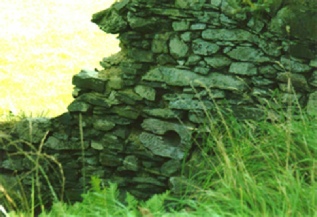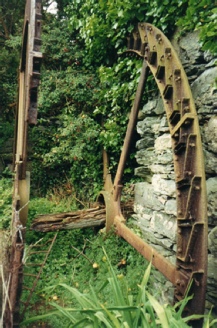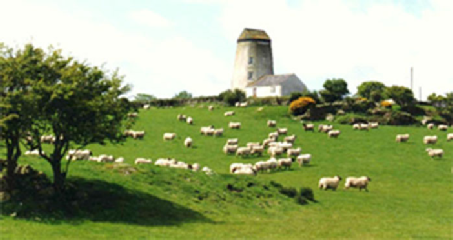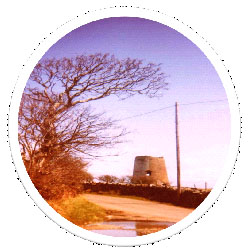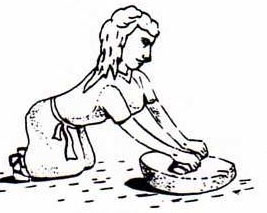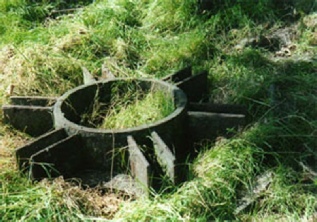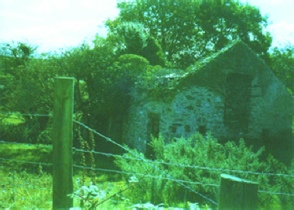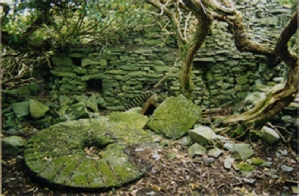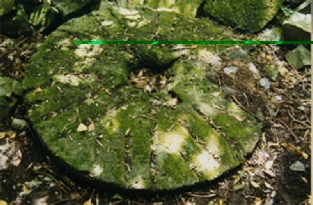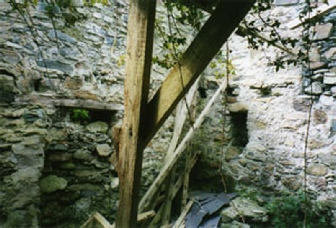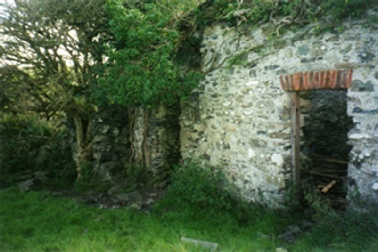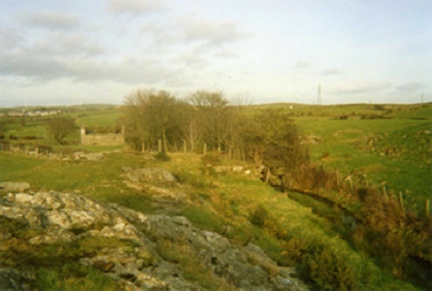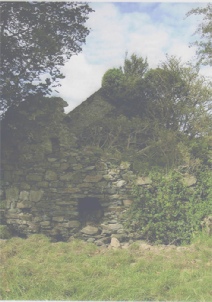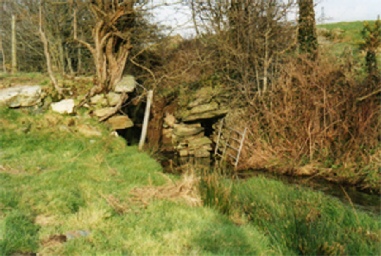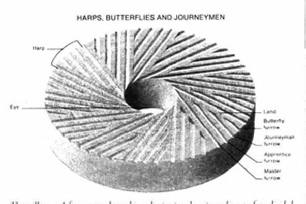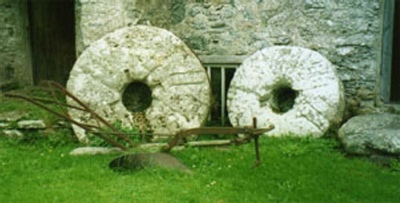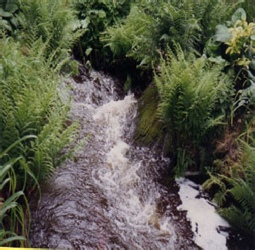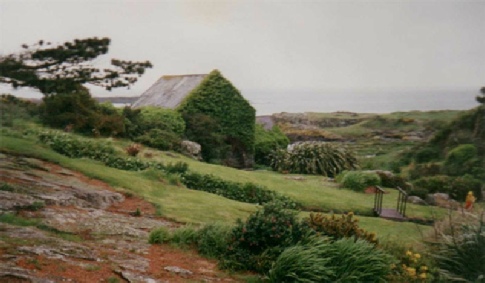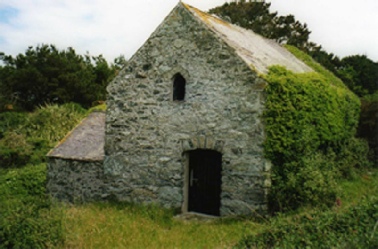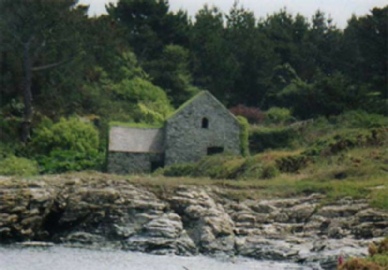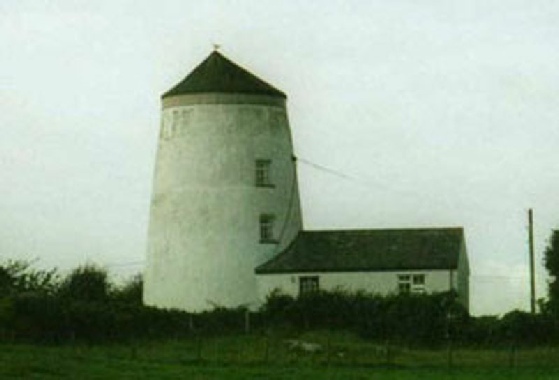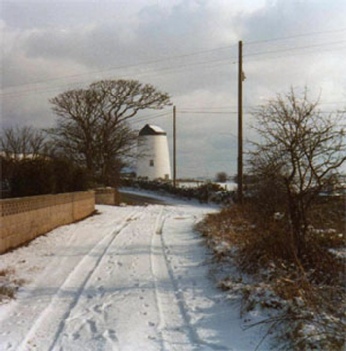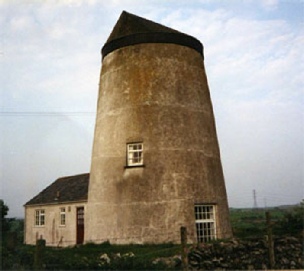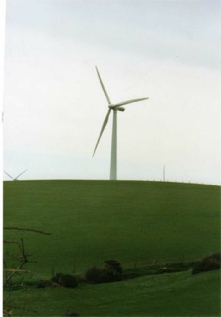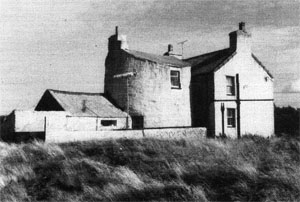
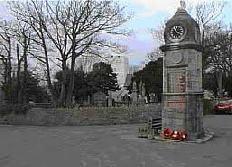
Cymdeithas Hanes Mechell

The Demography of Llanfechell 1851 & 1901
William Bulkeley and the poor of Llanfechell
Llanfechell in the early 19th Century
There are 6 Mills in the community:-
Meddanen Water Mill; Cafnan Water Mill ; Maen Arthur Mill; Pant y Gŵydd Mill; Cefn Coch Mill; Pandy Cefn Coch Mill
Why have mills? The simple answer being food!
The first process of grinding corn was two stones being rubbed together. The next step was the pestle and mortar, i.e. one hollow curved stone, the other being round.
*******************************************************
Anglesey Water Mills date back to Roman times-
Water and Wind Mills cannot be dated like Churches, because of wear and tear.
The remains of a cog wheel at Meddanen Water Mill
As the population increased, the grinding process improved. The grinding stones were placed horizontally. There was a dent in the lower stone , while the upper stone had a hole through its centre so that a handle could be fixed through it to turn it. Women usually carried out the work. There is reference to this in the New Testament and in the Laws of Hywel Dda.
The next step was the cog wheel. A shaft was placed through the centre of the lower stone and fixed to the upper stone. This form of grinding was done, by the use of a harnessed horse or mule walking round the mill
*******************************************************
The remains of Meddanen Water Mill can be seen on Bwchanan Land, and a footpath leads down to the mill and River Meddanen past Minffordd Mill. The old Water Mill was probably worked in conjunction with the Wind Mill. This was practised in other parts of the country, as it would have been possible to grind corn in the water mill, when there was no wind to work the wind mill, and to the contrary, the wind mill could be worked when the water level in the river was low.
It is believed that some of the machinery was still there until a few years ago, when they were given to a gentleman from Moelfre who was renovating a mill. In 1993 some of the grinding stones were still at the mill.
Some of the stones at Meddanen Water Mill in 1993
A photograph of the stone showing its parts
Meddanen Mill as it is today
Meddanen River flowing past the Mill today
Main entrance to the Meddanen water mill today
Water for working Bwchanan Water Mill came from the Mill Pond. There was very little use of the Mill during the summer, because of the low water level in the Meddanen.
Water flows from Llyn Bwch into Meddanen River.
The old Water Mill
Remains of the dam
........................................................
Grinding stones for the Mills came from Penmon and Benllech Quarries, the best being Bwlchgwyn in Anglesey . At a later date grinding stones came from the Rhine Valley.
In 1314 the cost of a grinding stone was 28/9d.
They measured approximately 4 feet across and weighed approximately a ton.
The surface of the grinding stone was divided into segments called harps with each segment divided into furrows known by the following names – Butterfly Furrow; Journeyman Furrow; Apprentice and Master. The hole in the centre was called the 'Eye'.
The Millwright would dress (clean) the stones during winter using a small double bladed pick.
Soot and a wooden plank would be used to ensure that the surface was level.
Cafnan Mill stands on the River Cafnan in Porth y Pistyll, between Wylfa and Cemlyn. There is evidence of the Mill in the 16th Century, and it is possible that there was a mill on the site in the 13th Century. It is likely that Cathaern Mill was the original mill on the Cafnan site.
In 1614 there is documentation of the Millers of Cafnan : David ap Hugh (25 years old), Ednyfed ap William (35 years old), Robert ap David, and his son Rowland ap Robert ap David (25 years old).
In 1637 Richard ap Hugh, the Miller of Cafnan Mill paid the sum of 5/-
In William Bulkeley's Diary of 1740, there is mention of a dispute between two land
owners over Melin Gafnan. On 4th October he accompanied his brother in law, Mr Lewis,
LLysdulas and Mr Lewis Morris (Custom-
On 17th May, 1740, Mr Lewis, Llysdulas, Mr William Bulkeley, Mr Griffith, Carreglwyd and three witnesses met to settle the matter of access to Cafnan Mill. John Griffiths of Garreglwyd stated that Mr William Hughes of Wylfa had told him that there was no access to the Mill through Cafnan Farm. Mr Hughes was adamant that he had said no such thing. Having walked along the route it was decided that Mr Lewis, Llysdulas and Mr Griffith, Carreglwyd would share the cost of placing a gate at the end of the road and that was the end of the matter.
...................................................
Richard Hughes, a Welsh Poet wrote the following verse at Cemaes Eisteddfod in the Eighteenth
Century-
Cafnan Mill – 1993
According to a National Trust Survey, it is believed that the machinery in the Mill
dates back to 1840 and is in reasonably good condition. The flow of the Mill stream
was diverted from Cafnan River to flow over the wheel when the mill was working-
The wheel is still there today but there is no stream.
In 1931, Lucy Williams,of Holyhead noted that the mill stream was by then a part of Cestyll Gardens owned by Lady Violet Vivian . When Cestyll Gardens were designed the stream was diverted to the garden to join Cafnan River and to flow towards the sea under a series of stone foot bridges.
Today Cestyll is owned by Wylfa and the Mill forms part of this beautiful garden.
*******************************************************
The Windmill has more than one name-
By the end of the 19th Century there is evidence that it was worked by a family called
Parry and this is noted in all the censuses from 1841-
1841 -
1851 – No record
1861 – Robert Parry
1871 – Robert Parry
1881 – John Parry
1891 – Morgan Parry
1901 – Morgan Parry
The family lived at T'yn Llidiart (Y Felin today).
There is no evidence after this date, but according to the book, 'Windmills of Anglesey' they resided at Neuadd Filwa.
In 1993 the late Owen Jones, Plas Brain recalled the Mill working and remembered a gentleman called Robert Rowlands, Mill Carrier. He also remembered, as a child at Carreglefn, judging the direction of the wind by the sails . He carried wheat flour from the Mill in order to bake bread (made from 1/2 wheat flour and 1/2 white flour). He also remembered Willie Parry, the Miller. Sometime after the Great War Willie Parry left and the Mill stopped working.
After this the Mill began to deteriorate. In 1929 when inspected by Rex Wailes the top part had disappeared and only one sail was left. Most of the machinery inside, however, was still intact. It continued to deteriorate and was described in 1954 as a shell without a roof, a door or windows.
At the end of the 1970s permission was given to turn the Mill into a dwelling, and it was bought by the Flannery family. They donated some of the mechanics to the Mill Carpenters who were working on Llynon Mill at the time.
The Mill in the Sixties
January 1982
1993
1993
PEN SINGRIG
While researching this project the writers came across earlier work by the late Mrs Maggie Williams of Tan Rallt, which noted a row of cattages, and interestingly there was a house named Pen Singrig situated between the Wind Mill and the Water Mill (there is no evidence of a house there today), but there are some stones by the kissing gate. Perhaps it may have been there.
..........................
According to the Census for 1841 John Thomas Miller/Farmer lived at Pen Singrig.
According to the 1851 Census Richard Williams, Mill Carrier lived there.
A grave stone for John Parry can be seen at Llanfflewin Old Churchyard with the following
instruction:-
Elizabeth Parry – wife of John Parry Melin Mechell, , died 24th April 1857, 67 years
Also the aforesaid John Parry, died 1st October 1858, 76 years
*******************************************************
Pant y Gŵydd Mill which is mentioned in the old verse, 'Melinau Môn' (Anglesey Mills), stands on the road from Mynydd Mechell to Carreglefn and in the old days was in the parish of Llanbadrig.
There is not much documentation about this Mill, which today forms part of a house. It is believed that the Mill dates back to the early part of the 18th century and stopped working in the 19th century. There is very little evidence about this Mill. It is not mentioned in the Tythe Map of 1844 or in the 1840 Ordnance Survey map, There is no reference to it in the diaries of William Bulkeley.
One reason given, as to why it had such a short life, and for its closure while other
mills in Ynys Môn were at their height both in numbers and productivity, was its
location. Although Pant y Gŵydd was situated on high ground, open and windy, the
surrounding land was unsuitable for growing corn -
Melin Llynnon sydd yn malu
Pant y Gŵydd sy’n ateb iddi
Cefn-
Ond Llanerchymedd sy’n malu ora.
*******************************************************
The Miller paid land rates to the Landlord, Squire Bulkeley, Brynddu in the case of Llanfechell.
There is no documentation of any Mill rate for Melin Minffordd, but in 1744 there is documentation –
Margaret Owen Pant y Gwydd 10/-
Richard Owen Melin y Nant 5/5 ½
The rule was that the Miller had to grind the Landlord's corn first, then permitted
to sell the remaining flour :-
1760 – 3/4c a bushel
1794 – 8/-
1804 – 10/-
Flour from Ynys Môn Mills were transported during the two World Wars -
Pan ydoedd newyn gynt mewn gwlad
Ac angen yno’n ffynnu,
Nid ydoedd raid ond troi i Fôn
Yn union rhag newynu.
Pa ryfedd oedd ym more son
Ei galw’n Fôn Mam Cymru
When there was famine in the land
And when need thrived
All that was needed was turn to Môn
As not to starve
No wonder in early days
To call her Môn Mam Cymru
The Miller resided next to the Mill in order to be on hand at any time. He was not allowed to leave the Mill without the Mill owner's permission.
The Miller had to follow rules and the following are examples of what he shouldn't
do:-
Leave the Mill to stand with corn in it
Leave ground flour in the cask
Leave flour sacks untied
Had to be courteous and fair towards his workers at all times
Answer the door at the second knock at all times
Keep the Mill floor clean and level at all times
(From Anglesey Atlas-
It was traditional for sons to follow their fathers.
The reason why Mills became redundant was mechanism. There was an experiment on the use of engines to turn the sails, but this failed. By today most of the old Mills have been turned into dwellings.
New Mills are seen on our land-
*******************************************************
Y Twrbein Gwynt
Lle mae esgyll yn disgleirio
Yn yr haul wrth droelli’n chwim,
Y mae gwyrth mewn twrbein uchel
Creu goleuni glan o ddim !
Ond ni chreir mwy o’i gwmpas
Un gymdeithas megis cynt
Dim ond peiriant amhersonol
Ynon’n hymian yn y gwynt
Heddiw daeth modernwaith gas a chodi llu Melinau
Difethwyd rhan o’n daear las,
A’u swn sy’n drysu’n pennau
Rhaid cofio am Felinau gynt,
A chadw rhain o’r gora,
Gwell awyr bur, a daear las
Na blodau lu yn marw
A gwell yw swn uwchben y maes
Y Melinau rhaid eu cadw.
*******************************************************
Inside the mill today
'Old Cafnan Great River forever famed silver flow,
Seen in both meadow and valley
And on its banks three mills be seen
As the streaming maiden flows.'
'Hen Afon Fawr Cafnan fyth enwog waith Arian,
Rwyn gweled ei dwylan mewn dyffryn a dôl
A chwyrn ar ei hechrwyn ceir maliad tair melin
Tra rhed y law-
Part of a poem written by Mr Glyndwr Thomas about the Windmills
Part of the shaft remaining at Meddanen Water Mill
